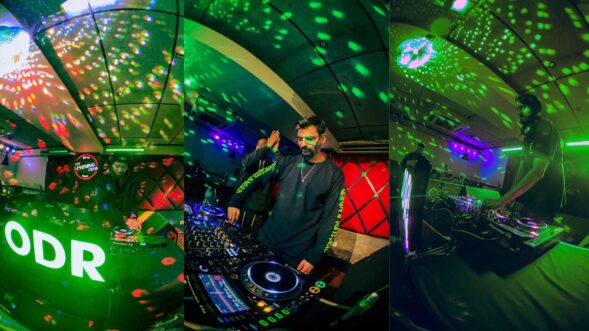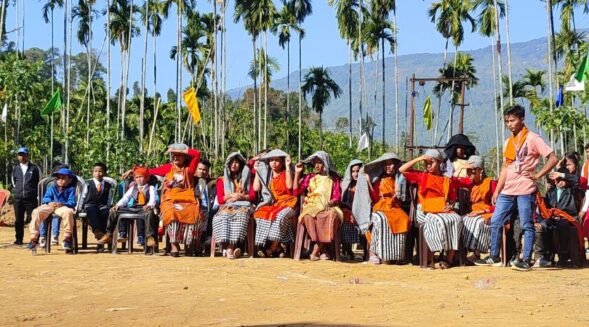
By Adity Choudhury
On the way to Sohra (Cherapunjee), a colonial-style bungalow is impossible to avoid. On most days, you can see cars and people. But on other days, it stands still, covered in fog, in sync with dark clouds signalling a rainy day.
Now transformed into Café Cherrapunjee, this 125-year-old Assam-type structure has stoically weathered storms; most importantly, time. Once a dak bungalow (a traveller’s rest house along a dak route), this space has seen legends grow around it, along with periods of abandonment.
I met the present proprietor of the Café, Alan W Kharkongor, to get an idea of the Bungalow, hoping to know more about this British Raj-era structure: of adventures, letters, and horses. What I got, instead, was a tale of transformation.
For him, this space has an emotional attachment. He is from Sohra and has passed through the Bungalow several times. He wonders about the men from faraway Europe surviving in Sohra – how they interacted with the locals, wearing their tupi (hats) and rode horses to move around and acquaint themselves with an alien culture.

Kharkongor says, “I don’t consider this place to be a dak bungalow; rather, it was an inspection bungalow. We’re trying to ascertain this. Locally, it is known as dak bungalow.”
Curious, I ask him why he considers the place an Inspection Bungalow. “The entire space was filled with stables. Mostly British officers would come here from Shillong, Sohra, Nongkhlaw or Mairang, for inspection. These are stories told by the elders.”
Sadly, there are no written records to point towards the presence of a dak bungalow – strange for an empire builder, known for its meticulous detailing of observations wherever they went.
Despite the lack of written records, this place is still called dak bungalow. Another story points to how it was used as a post office, one of the many in the region. Official horses from Dhaka, en route to erstwhile undivided Assam, would be changed here.
Kharkongor mentions how British civil and military officers camped during the construction of the old Shillong – Cherrapunjee road. Perhaps, they would exchange letters from this place, hence the name.
With time, many stories grew around the dak bungalow.
Stories of hauntings or khana ksuid also abound in this place. Locals used to refer to this place as Bhoot Bangla. Kharkongor doesn’t believe in this, and jokes, “I am yet to meet one. Nowadays ghosts no longer live in dak bungalows.”
That said, he agrees that in a place like Sohra, any place that is abandoned and looks dingy will have stories about it. “Legends grow around such spaces. The Bungalow has stood here for so long, people tend to think negatively about it.”
He has also heard the story of a UFO sighting near the dak bungalow in 1967, which he finds haunting, more than ghost stories. His grandmother would tell him this story.
Kharkongor tells me about how the bungalow was left abandoned at different points in time, “I remember passing through this place on my way to Shillong and back to Sohra. There were no roofs or flooring. This was in the 1980s.”
From the late 19th century to 1947, it was a colonial structure, catering to those from the British Raj.
The Public Works Department (PWD) took charge post-independence, during the construction of the Mawkdok Bridge, before abandoning the space. The labourers stayed there during its construction and a massive chunk of iron used in making the bridge, is kept inside the Bungalow.
“Given it’s a part of history, I didn’t feel like removing it,” Kharkongor adds.
Later on, the tourism department renovated the main building. A mountaineering institute also operated for some time and offered training to the locals. He got to know from the people that it was used as a gambling den for some time.
We spoke about what makes the Bungalow, a typical colonial structure. During its transformation to the present Café Cherrapunjee, Kharkongor discovered that it was built using red mud and lime. “The Bungalow is a house with no pillars. I had to remove certain portions to expand the kitchen area and saw this, along with huge slabs of stone.”
The fireplaces in the original rooms are still intact. Kharkongor says, “Entering the building feels like you’re trapped in time. 125 years ago, the climate was colder throughout the year. The average rainfall was higher as well. I imagine British men gathering around the fireplaces to stay warm and even dry their clothes. They wouldn’t see the sun for days on end. Besides, there was no electricity then.”
While the architect of the dak bungalow remains shrouded in mystery, David Roy’s name is connected with this space, either as a contractor or as an architect.
Much of the stories surrounding this place are oral narratives, spaces that thrive in multiplicity of ideas and lores. In writing this piece I remembered how the dak bungalow felt almost otherworldly and imposing as it continues to archive memories. As I stepped inside, an old fiat greeted me, reminding me of how spaces co-exist in multiple stories and timelines.
(The writer is Features Coordinator with The Meghalayan)






